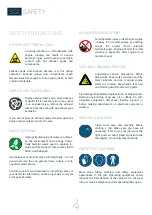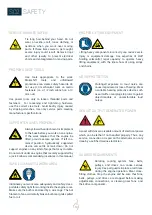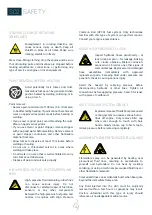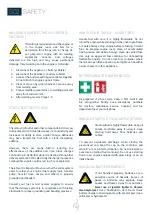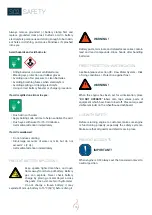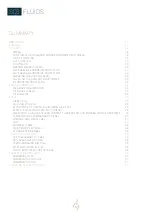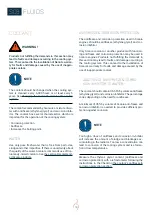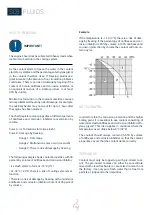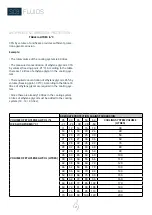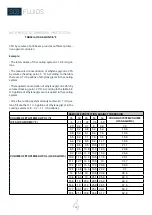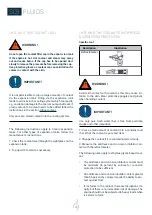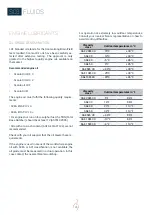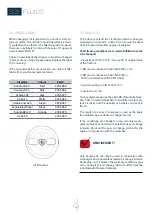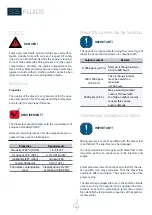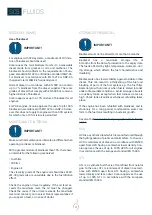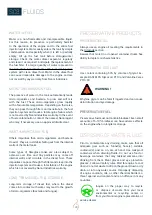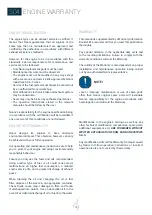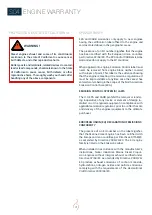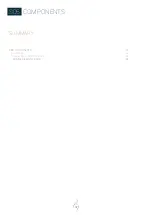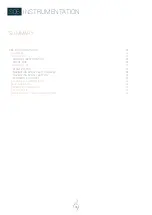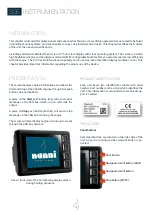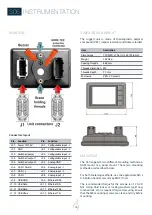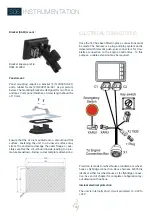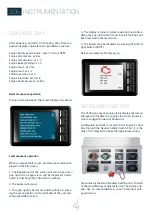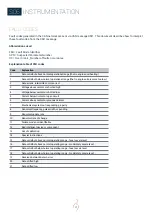
26
FUELS
DANGER !
Fuels and some fluids on board ships are easily flam-
mable. Handle fuels with care and respect all safety
rules. Do not refuel the tank while the engine is running.
Do not smoke during the filling process or in the engine
compartment. Ventilate the engine compartment be-
fore starting. Wear protective gloves and eye protective
glasses. Avoid synthetic clothing which can melt when
ignited. Always keep a fire extinguisher nearby.
DIESEL FUEL
Properties
The quality of the diesel is very important for the oper-
ation and service life of the engine and the fuel system,
and also for the engine performance.
REQUIREMENT !
The diesel fuel should comply with the requirements of
European standard EN590.
However, larger tolerances of certain properties are ac
-
cepted. Please see the table below:
Properties
Requirements
Viscosity at 40°C (104°F)
1.4-4.5 cST
Density at 15°C (59°F)
0.79-0.87 kg/dm
3
Ignitability (CET rating)
minimum 49
Lowest flashpoint
56°C (132°F)
Particulate contamination
level
Classification 22/20/17
according to ISO 4406
PERMITTED SULPHUR CONTENT IN DIESEL
IMPORTANT !
The operator is responsible for using the correct type of
diesel to ensure that local laws are complied with.
Sulphur content
Remark
0-2000 ppm (<0.2 %)
Normal oil change interval
of up to 500 hours
2000-4000 ppm
(0.2-04 %)
The oil change interval
must be halved to a
maximum
of 250 hours.
4000 ppm (0.4 %)
Max. permitted sulphur
content. If diesel with
too high a sulphur content
is used, this causes
engine damage.
TEMPERATURE DEPENDENCE OF DIESEL
IMPORTANT !
Mixing kerosene or other paraffins with the diesel fuel
is prohibited. The injectors may be damaged.
It is not permissible to mix petrol with diesel fuel. In the
long term, petrol can cause wear in the injectors and
engine.
At temperatures lower than those specified for the die
-
sel, paraffin wax may precipitate from the diesel fuel
and block filters and pipes. The engine can then lose
power or stop.
The diesel fuel is adapted for use in the specific climate
of each country. If an engine is to be operated in a tem-
perature zone with a temperature lower than normal,
first identify the temperature properties of that particu
-
lar diesel fuel.
S03
FLUIDS
Summary of Contents for N16.1000 CR3
Page 2: ......
Page 4: ......
Page 34: ...34 S05 COMPONENTS ENGINE VIEWS N16 CR3...
Page 35: ...35 NOTES...
Page 48: ...48 S06 INSTRUMENTATION SYSTEM LAYOUT INCLUDING OPTIONS...
Page 118: ......

